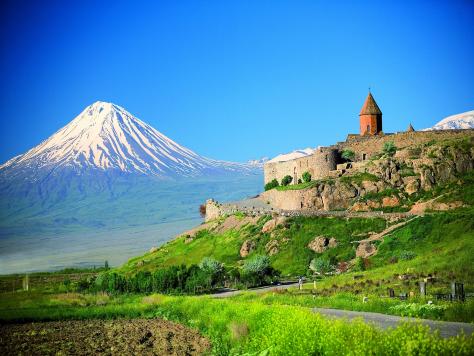Mount Ararat
Hamur, Agri, Turkey, Europe

Customized Activity
You are free to customize your itinerary exactly the way you want. Choose transport, hotel & sightseeing as per your desires.
Includes
Meals
Transport
Pick-up & Drop
Activities
Accomodation
About The Attraction
Mt. Ararat, the traditional resting place of Noah’s Ark, is located in eastern Turkey near the Armenian and Iranian borders. The summit of Mt. Ararat is 5,165 meters (16,946 feet) above sea level. Ararat is a dormant volcano and its last eruption was on June 2, 1840. At present the upper third of the mountain is covered with snow and ice throughout the year. The Turkish name for Mt Ararat is Agri Dagi (which means mountain of pain). Adjoining Mt. Ararat, and 4000 feet lower, is the peak known as Little Ararat. Classical writers considered Ararat impossible to scale and the first known ascent was that of Frederic Parrot, a German physician, in 1829. Prior to the fall of the Soviet Union, Armenia was part of the Russian state and border conflicts between the Turkish and Soviet authorities often made it impossible for climbers to gain access to the mountain. Armenia has now regained its freedom but continuing conflicts with the Turkish government and the Turkey’s own conflicts with local Kurdish tribes have continued to limit further exploration of the great peak. If one is able to gain permission to climb, it is best to start from the Turkish town Dogubayazit on the south side of the mountain. The average climber who is experienced in high altitudes can complete the trek in three days, but it is better to allow four or five days so that exploration of the peak can be included. Late August is the best season for climbing.
Over the years various groups have explored Ararat in the hopes of finding remains of Noah's Ark. Both Josephus in about 70 AD and Marco Polo about 1300 AD mention the Ark’s existence on the mountain, but their reports are based on others' accounts. The story of Noah's ark, as it is told in the Old Testament, is a reworking of an earlier Babylonian myth recorded in the Gilgamesh Epic. The hero of the earlier version is called Utnapishtim. It seems probable that the Babylonian story was based on a devastating flood in the Euphrates River basin, and that the ark in that story was grounded on the slopes of one of the Zagros mountains. According to Old Testament passages, God became so dismayed with the wickedness of the human race that he decided to wipe it out with a cataclysmic flood. Only a man named Noah was to be spared. So God warned Noah to build a boat to house his family and the birds and animals of the earth.
And the waters returned from off the earth continually: and after the end of a hundred and fifty days the waters decreased. And the ark rested in the seventh month, on the seventeenth day of the month, upon the mountain of Ararat.
The Bible only mentions Ararat in two other passages (2 Kings 19:37 and Isaac. 37:38), where it makes it clear that it is speaking of a land and a kingdom. The biblical word that we read as "Ararat" could as well be read "Urartu" because the text has merely "rrt" and the proper vowels must be supplied. Urartu was the name of a historical kingdom, but the word also meant "a land far away" and "a place in the north."
Best Time
- March,April